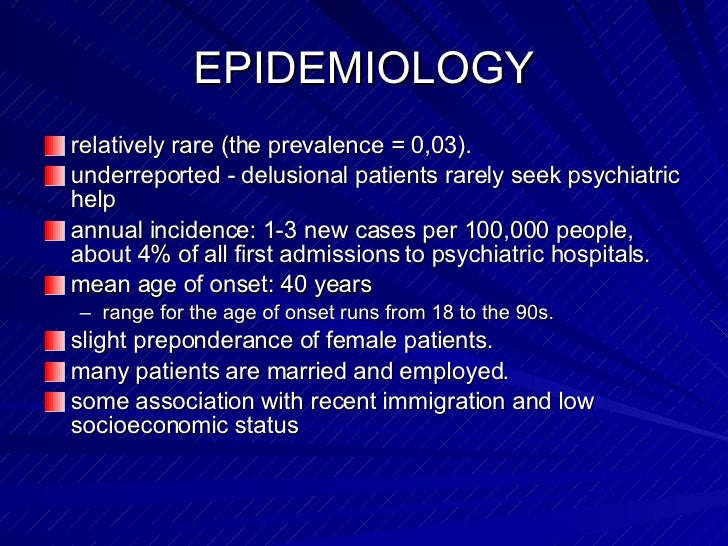

Practical implications for psychiatrists and other mental health professionals are discussed. This case illustrates the effectiveness of the MMPI-2 in documenting patient recovery during treatment for delusional disorder.

4 Up until now, there has been nothing in the literature that addresses the utility of the MMPI-2 in tracking or documenting treatment effects in delusional disorder. There have been hundreds of studies on the MMPI-2 and the treatment of psychiatric disorders. 3 The best objective measure of adult psychopathology in the world is the Minnesota Multiphasic Personality Inventory-2 (MMPI-2). 2 Only a handful of studies have used objective outcome measures to evaluate patient improvement during treatment for delusional disorder.

1 It has been found that persecutory delusions respond least well to treatment, with 50% improvement rates and no reports of complete recovery. Available research suggests that 50% of patients who are adequately treated achieve a symptom-free recovery, while 90% of patients demonstrate at least some improvement. Unfortunately, many individuals with this disorder refuse treatment altogether. It is often difficult to treat because of the individual’s denial of a problem, difficulties in establishing a therapeutic alliance, and interpersonal and social conflicts. Print.Delusional disorder is a major psychotic illness that is enigmatic and poorly understood. The Spectrum of Psychotic Disorders Neurobiology, Etiology & Pathogenesis. CS1 maint: Multiple names: authors list ( link)

"Psychiatric illness in first-degree relatives of patients with paranoid psychosis, schizophrenia and medical illness". ↑ 6.0 6.1 Kendler KS, Masterson CC, Davis KL (1985)."A descriptive case-register study of delusional disorder". ↑ 5.0 5.1 de Portugal E, González N, Haro JM, Autonell J, Cervilla JA (2008)."Schizophreniform disorder, delusional disorder and psychotic disorder not otherwise specified: clinical features, outcome and familial psychopathology". Cambridge New York: Cambridge University Press, 1999. Delusional disorder paranoia and related illnesses. "An overview of treatment in paranoia/delusional disorder". "Hearing impairment and psychosis revisited". ↑ 1.0 1.1 Thewissen V, Myin-Germeys I, Bentall R, de Graaf R, Vollebergh W, van Os J (2005).Personality (sensitivity narcissistic traits).Subtle brain abnormality (e.g, head trauma).Family history of paranoid personality disorder.Risk factors for delusional disorder include the following: OverviewĬommon risk factors in the development of delusional disorder are family history of paranoid personality disorder, sensory impairment, age, subtle brain abnormality, social isolation, personality (sensitivity narcissistic traits), immigration, lower socioeconomic status. Associate Editor(s)-in-Chief: Simrat Sarai, M.D. Risk calculators and risk factors for Delusional disorder risk factorsĮditor-In-Chief: C. Natural History, Complications and Prognosisĭelusional disorder risk factors On the WebĪmerican Roentgen Ray Society Images of Delusional disorder risk factorsĪll Images X-rays Echo & Ultrasound CT Images MRIĭelusional disorder risk factors in the newsīlogs on Delusional disorder risk factorsĭirections to Hospitals Treating Tongue cancer Differentiating Delusions from other Diseases


 0 kommentar(er)
0 kommentar(er)
